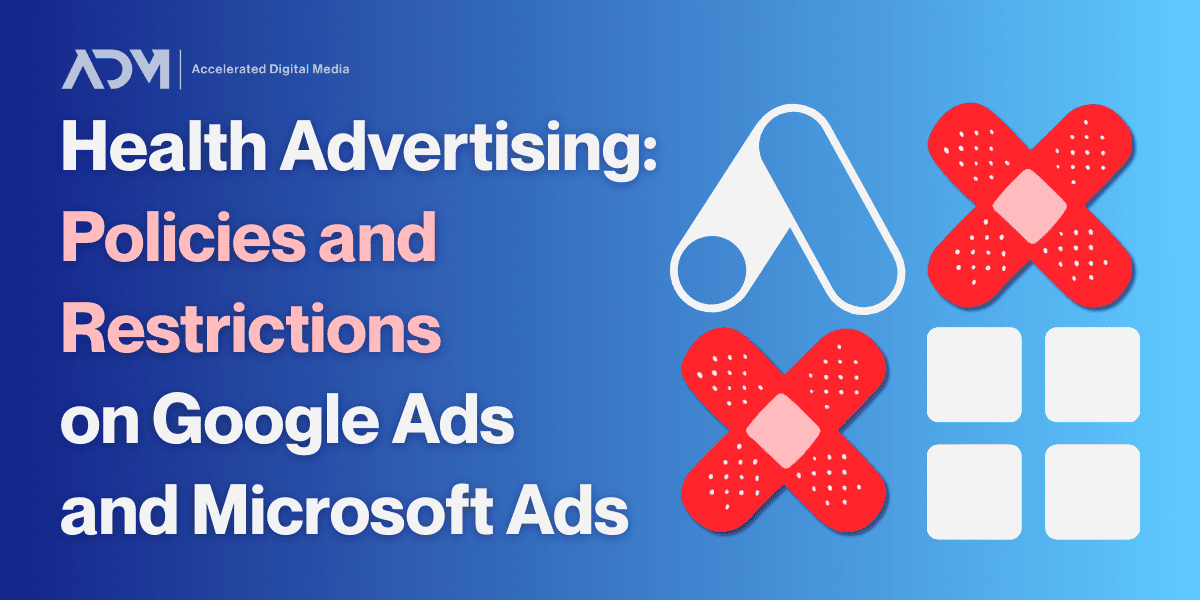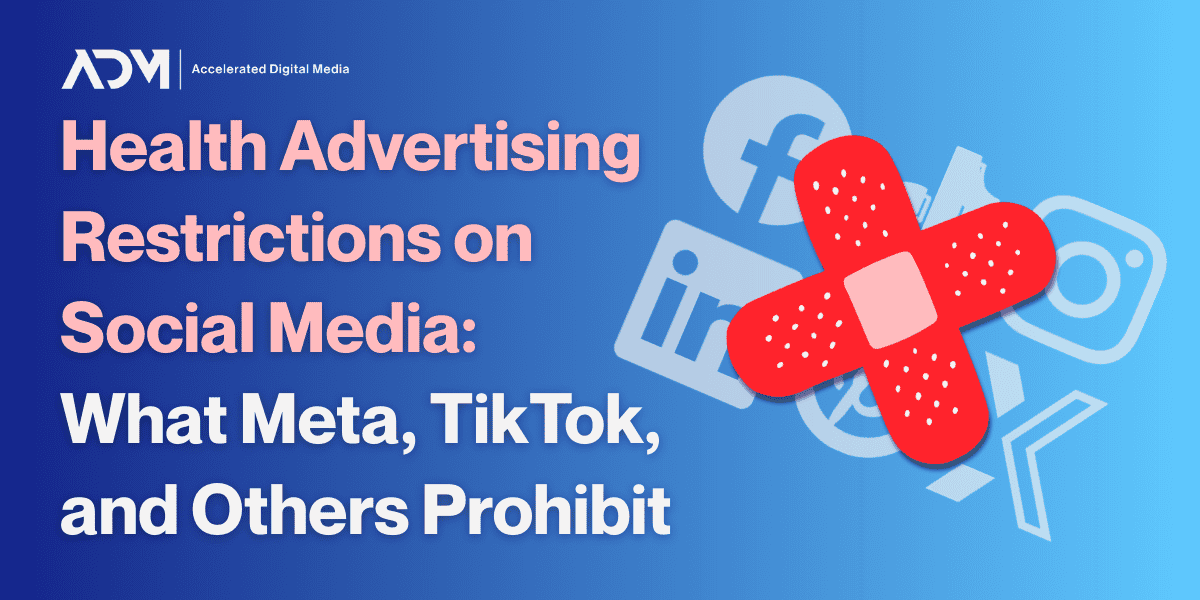Brand recognition should be top-of-mind for digital health companies, specifically telemedicine brands. Investment in digital health technologies ballooned to over $57 billion in 2021, driven in large part by new telehealth investment. During the global COVID-19 pandemic, new startups have received massive financial backing while legacy health institutions have matured their digital health offerings.
Since growth in telehealth is fueled by new patient signups, telehealth brands need effective awareness strategies to stand out from all the other options.
But branding can be a tricky pursuit. Many traditional branding techniques deliver insights about the width of their reach, but little in the way of depth. If companies can’t confidently prove that their branding efforts are guiding new prospects into the sales funnel, they may be hesitant to adequately invest in their digital marketing brand strategy.
ADM believes that branding campaigns can be as traceable and intentional as lower-funnel campaigns. By tying the campaigns to thoughtfully-selected conversion actions and closely monitoring control and exposed audience groups, our approach makes branding informative, effective, and scalable—we call it performance brand marketing.
Why Is Performance Brand Marketing Different?
Performance brand marketing closes the gaps that companies often encounter when they run branding ads. It bases the success of your branding efforts not just on volume of impressions, but on verifiable conversion actions that lead to deeper reporting and better optimization opportunities.
Traditional brand marketing focuses on key performance indicators (KPIs) like reach—how many eyeballs your message gets in front of—and frequency—how many times you can reach a given pair of eyeballs. While these remain key elements to monitor, they don’t do much to illustrate the effectiveness of your message or the quality of the audience you are reaching. Without that information, it isn’t just harder to determine if your efforts are connecting: it can also make it difficult to align branding efforts with a positive impact on your bottom line.
Performance brand marketing is a science. It relies on conversion tracking combined with control and exposed group comparisons to deliver deeper insights and better outcomes. It can also include multi-touch and multi-channel attribution for an even more holistic view. When armed with behavioral cues from those who have and have not been exposed to your branding ads, you are better equipped to scale a robust branding campaign that can transition users to the next stage of your sales funnel.
How Do You Measure Performance Brand Success?
Brand lift can be measured through primary market research like surveys, interviews, focus groups, or social listening. It can also be assessed through the top-line web metrics like impressions, reach, new site visitors, average time-on-site, and bounce rate. These inputs will always be vital to marketing agencies, but they don’t have to be the be-all-end-all of your branding campaigns.
For a deeper look at branding success, ADM relies on upper-funnel conversion tracking with a focus on how conversion rates differ between control and exposed groups. Using multiple data sources, we examine when users who have been exposed to your performance branding ads take action, like reaching your website through a relevant keyword search or interacting with onsite features like contact forms or product actions.
For instance, we built an audio campaign for one of our telehealth clients to expand awareness of their migraine treatment offerings. Using data measurement tools from Podsights, we demonstrated a 32.2% lift in website views among customers who heard the podcast advertisements compared to those who hadn’t—and a 15% increase in new traffic to the site based on the keyword “migraine.”
Why Is Programmatic Advertising the Best Fit for Performance Brand Marketing?
Programmatic advertising refers to a breadth of online advertising spaces across mediums, including connected TV (CTV), streaming audio, and more. Programmatic ads are a natural fit for performance brand marketing because they reach a variety of platforms that differing audiences use frequently and intently–and those audiences can be targeted contextually.
That’s key for healthcare companies that are rightly limited in the amount of first- and third-party data they can collect and deploy for advertising. With contextual targeting, you can bring robust and engaging visual, text, or audio ads to consumers at different stages of their customer journey. Contextual targeting isn’t just compliant—it’s often more effective. In one ADM example, contextual audiences were 7.6 times more likely to convert than third party audiences.
Brands can deliver banner, native, or embedded video advertising on pages that contain relevant keywords, so when a user is reading a blog about mental health topics, they may see an ad for teletherapy. That keyword strategy can be organized by funnel placement, just as you would for Search campaigns in Google Ads. With that keyword structure in place, contextual ads can be deployed sequentially to reach users with the right message no matter where they are in the funnel.
How Do You Reach Your Target Customers?
To bring your programmatic ads to your ideal audience, you start by building a profile: What your target customer cares about, what they may like or how old they may be, perhaps how much they may know about your brand or even your vertical. ADM’s trusted data partners help you build composite audiences to deploy your advertising to, so you can reach users who may be interested in your offerings without violating their anonymity.
For instance, more people are familiar with telehealth today due to its growing necessity during the COVID-19 pandemic. By leveraging data from data partner MRI Simmons, ADM sought to narrow in on a telehealth target audience, defined as “willing to use video chat to meet with a doctor and buy prescription or over-the-counter drugs online.”
Based on behaviors, the target telehealth consumer keeps up with news and current affairs; is price-conscious; reads reviews; frequently takes preventative medicines; and is often eco-friendly. They spend an average of 28 hours a week online and their media consumption habits skew heavily towards video streaming services like connected TV and streaming audio, creating ample opportunities to reach them while they’re actively engaged.
Today, over 20.7M people fit that overall consumer profile—but audiences can be segmented down with a drastically higher degree of specificity. Armed with the knowledge of who their customers are and what media habits they over-index for, brands can use contextual targeting to run innovative performance brand marketing campaigns that reach their audience where they already are—while still getting the performance insights they need to optimize further.
How Do You Build on Performance Brand Success?
As with traditional branding efforts, performance brand marketing can be an awareness play–but it is also meant to be an entry point to your sales funnel. Programmatic ads give you the latitude to follow up your initial branding message with content that nurtures users from awareness to engagement, and the deeper reporting insights it returns.
While Google-based advertising does not allow healthcare marketers to retarget previous site clicks, programmatic marketing allows that opportunity. Once you have built a list of potential customers by focusing on reach at efficient costs, you can shift to focusing on efficacy and spur further engagement through segmented retargeting.
A segmented programmatic retargeting program can include site retargeting (people who have visited the site through any channel), click retargeting (people who have interacted with an ad but not taken the final action), or education retargeting (people who have taken site actions like requesting more information, but not the intended final action). Rather than firing off a generic branding flight and hoping it works, you’re now actively using your branding message as a gateway to patient relationships.
By pairing targeting and retargeting capabilities that Google can’t replicate, performance brand marketing is a type of branding that delivers more audience insights and better opportunities to engage new users. For digital health and telehealth brands, that may be the extra boost they need to stand out among the growing crowd of competitors.
Turn Your Brand Marketing Into a Performance Channel
As both brand marketing and performance marketing are paramount for success in the digital health space, tying the two together is a worthwhile effort. Successfully deploying these strategies and making performance brand marketing a reality through your paid media channels is an attainable goal when executed correctly. Accelerate your growth now.




